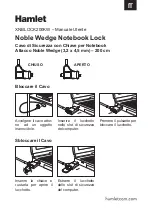
4.1 Overview
4 Replacement Procedures
PORTÉGÉ R830/Satellite R830 Maintenance Manual (960-880)
[CONFIDENTIAL]
4-7
Assembly Procedures
After the computer has been disassembled and the part that caused the fault has been
repaired or replaced, the computer must be reassembled.
Take note of the following general points when assembling the computer.
•
Take your time and follow the instructions carefully. Hurrying the assembly work
will only introduce new problems.
•
Check that all cables and connectors are securely connected.
•
Before fastening FRUs or other parts in place, ensure that no cables are caught on
screws or the FRU.
•
Check that all latches are securely closed.
•
Ensure that you have installed all FRUs correctly and do not have any screws left
over. Using an incorrect screw may damage the thread or screw head and result in the
FRU not being securely fastened in place.
After installing FRUs, check that the computer operates correctly.
Tools and Equipment
The use of Electrostatic Discharge (ESD) equipment is very important for your safety and
the safety of those around you. Proper use of these devices will increase the success rate of
your repairs and lower the cost for damaged or destroyed parts. The following equipment is
necessary to disassemble and reassemble the computer:
•
One Philips screwdriver with type 0 bit (for S-THIN HEAD screws)
•
One Philips screwdriver with type 1 bit (for screws other than above)
•
Tweezers (for lifting screws)
•
ESD mats (lay on work table or floor)
•
An ESD wrist strap and heel grounder
•
Anti-static carpet or flooring
•
Air-ionizers in highly static sensitive areas
•
Antenna coaxial cable disconnector
















































